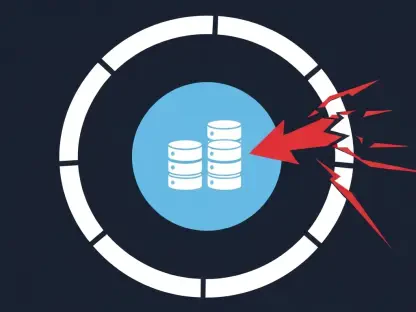In a region where media narratives are often dominated by propaganda and access to reliable information is limited, data journalism in the Middle East and North Africa (MENA) has emerged as a crucial tool for advancing accountability and transparency. By meticulously documenting major conflicts, human rights violations, and social justice issues, data journalism organizations have been able to provide a clearer and more accurate picture of the on-the-ground realities. These efforts are instrumental in challenging entrenched narratives and ensuring that the voices of the vulnerable are heard.
The Pioneers of Data Journalism
Pioneering organizations such as the Yemen Data Project (YDP) and Visualizing Palestine (VP) have been at the forefront of leveraging data to contest misleading narratives. YDP’s meticulous documentation of airstrikes in Yemen has had significant legal and policy ramifications. The project compiles comprehensive and unbiased data, working with local researchers to understand the biases and limitations inherent in the information available. This effort has been pivotal in legal proceedings and policy decisions, providing undeniable evidence that holds powerful actors accountable for their actions.
On the other hand, Visualizing Palestine has focused on creating powerful visuals to highlight the struggles of Palestinian life. By collaborating with external designers and researchers, VP amplifies its message and counters mainstream media portrayals of the conflict. Infographics produced by VP provide a human-centric view of issues such as forced displacement, hunger strikes, and other injustices faced by Palestinians. This data storytelling approach ensures that the narratives surrounding these issues are framed with accuracy and empathy, often challenging the conventional portrayal in international media.
Grassroots Initiatives and Community Efforts
Grassroots initiatives have played a vital role in the advancement of data journalism in the MENA region. The Yemen Data Project, which started without any formal funding, relied on a network of academics, human rights organizers, and activists to document airstrikes in Yemen. This community-driven effort highlights the power of collaboration and local knowledge in compiling accurate and impactful data. As airstrikes increased following the cessation of the UN Human Rights Council’s mandate, YDP’s thorough documentation became even more critical in showcasing the correlation between the absence of international oversight and the rise in civilian casualties.
Similarly, Visualizing Palestine’s long-term commitment to countering media portrayals has led to international recognition and usage by human rights organizations. Despite the challenges posed by quickly outdated data, VP continues to produce relevant and powerful visuals that provide indispensable evidence to support the Palestinian cause. The continuous collaboration with local communities ensures that the data remains accurate and grounded in the realities of those affected.
Legal Impacts and Accountability
The work of data journalism organizations in the MENA region has had profound legal and policy impacts. The Yemen Data Project’s documentation has been crucial in evaluations concerning arms sales to Saudi Arabia. For instance, the YDP’s data was pivotal in suspending British arms sales, displaying the concrete impact of accurate and meticulously collected data. This example highlights the broader implications of data journalism in influencing international policies and holding governments accountable.
Visualizing Palestine’s contributions have also been substantial in legal contexts. Their visually compelling graphics have been used in war crimes investigations, providing robust evidence that supports international justice efforts. Such usage underscores the importance of data journalism not just in informing public opinion but also in providing the empirical basis required for legal accountability. The credibility and thoroughness of their data have cemented the role of VP in global discussions surrounding the Israeli-Palestinian conflict.
Investigative Journalism in MENA
The Arab Reporters for Investigative Journalism (ARIJ) has been at the forefront of uncovering stories of public interest under challenging conditions. ARIJ’s reliance on open data, web scraping, and international datasets has been instrumental in circumventing censorship and political pressure. The investigative journalism facilitated by ARIJ brings to light corruption, conflicts of interest, and other issues that often remain hidden due to governmental opacity.
ARIJ’s extensive training programs in data journalism empower journalists with the skills to analyze financial records, government spending, and corporate disclosures. This training enables reporters to build strong, data-backed stories that expose malfeasance and foster transparency. These efforts significantly enhance the capacity of local journalists to hold powerful actors accountable and ensure that the public is well-informed.
Visual Storytelling: Bringing Data to Life
The visual storytelling approach adopted by AJ Labs, Al Jazeera’s visual storytelling team, is another key example of how data journalism in the MENA region humanizes complex data sets. AJ Labs’ work on conflicts like the Gaza war goes beyond the mere presentation of numbers. By incorporating video testimonies, animations, and graphics, they bring to life the data that might otherwise seem impersonal. This method helps viewers connect emotionally with the stories, making the data more compelling and harder to ignore.
AJ Labs also leverages open-source intelligence, including satellite imagery, to add depth and veracity to their reports. This approach ensures that their storytelling is not just engaging but also backed by solid evidence. By transforming raw data into clear and relatable narratives, AJ Labs exemplifies the power of data journalism in fostering a deeper understanding of conflicts and humanitarian issues.
Challenges and Achievements
In regions like the Middle East and North Africa (MENA), where media narratives are frequently shaped by propaganda and access to reliable information is scarce, data journalism has become an essential tool in promoting accountability and transparency. This form of journalism meticulously tracks and documents critical events such as major conflicts, human rights abuses, and social justice issues. By doing so, organizations dedicated to data journalism can offer a clearer and more accurate depiction of realities on the ground than traditional media sources.
These data-driven efforts are vital in challenging long-standing, entrenched narratives that might otherwise go unchallenged. They play a key role in ensuring the voices of the vulnerable and marginalized are heard and acknowledged. In environments where misinformation can easily skew public perception, the meticulous and factual reporting characteristic of data journalism serves as a beacon of truth. This is not only essential for a well-informed public but is also pivotal in upholding human rights and advocating for social justice.
By bypassing the sensationalism often found in mainstream media, data journalism provides a platform for nuanced and comprehensive reporting. This empowers the population with factual information and enables more informed decision-making. As data journalism continues to grow and evolve in the MENA region, its contribution to transparency, accountability, and social justice remains indispensable.









